Catnip is a member of the mint family known to produce a state of euphoria in about two-thirds of cats. Cats who are given catnip may roll in it, paw it or even eat it. Cats who enjoy catnip will respond to both fresh and dried varieties. Pet owners who wish to provide some sensorial stimulation for their feline companions have a variety of toys from which to choose.
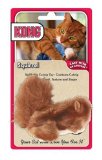
1.) The Kong Squirrel Catnip Toy is a smaller version of the clever rodent that cats love to watch at birdfeeders. This stuffed toy contains no strings, mylar or exposed bells which can sometimes be dangerous to cats. The squirrel also has an opening so that the catnip can be replaced when it looses its strength. Kong sells catnip “teabags” for mess-free play that can be put inside the squirrel, or kitty owners can refill the squirrel with loose catnip. Kong also makes other versions of this toy in different animal shapes.

2.) The Fat Cat Catfisher Doorknob Hanger with 4 Catnip Lures is a whimsical toy designed to fit over a standard doorknob. The four detachable lures can be replaced if they get worn out. The toy is in the shape of a cartoon cat head and the lures are shaped like colorful sea creatures. If you’re tired of reaching under the refrigerator to extract lost cat toys, this may be the toy for you.

3.) The Purr Muda Triangle isn’t just cleverly named – it’s filled with strongly-scented, organic catnip. The Purr Muda triangle is five inches long and is made in the U.S.A. Choose from three colors – pink, green and yellow. Although it’s a relatively simple toy in the shape of a triangle, kitties love it.
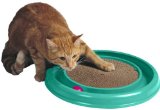
4.) The Bergan Turbo Scratcher Cat Toy has two functions. It’s entertaining and enjoyable for your cat, plus it allows your cat to indulge his scratching instinct on the toy’s corrugated cardboard base and not your furniture! Cats are instantly drawn to the catnip-scented cardboard and plastic ball that spins around the plastic channel that circles the perimeter. The cardboard pad in the middle can be replaced.

5.) Pawbreakers Candy for Cats is an unusual toy. Winner of the Cat Fancier’s Editor’s Choice Award, this 1.5” ball of catnip is 100% natural and completely edible. Cats can bat it around, gnaw on it and carry it. This simple toy can provide hours of fun. It is safe for dogs as well.
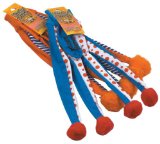
6.) The Kitten Mitten is a glove with long, dangly fingers festooned with bells and pom-poms. The addition of catnip makes this toy irresistible. The Kitten Mitten is perfect for the cat owner who loves to interact with her pets.
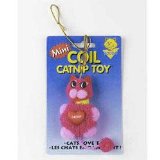
7.) The Booda Mini Coil Catnip Toy for Cats comes on an elastic string that can be looped around any doorknob. Containing Booda’s own blend of ultra-premium catnip, this little toy is sure to delight any feline. This toy is 3” long and is made from cotton-blend yarns.

8.) The Yeeow! Sour Puss Lemon is a citrus-shaped cat toy that is filled with organic catnip. This bright yellow fruit is made in the U.S.A. and features a floppy, bite-able leaf at one end to amuse and entertain your kitty.
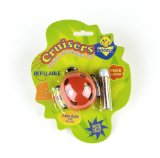
9.) The Petmate Catnip Cruise Ladybug Cat Toy is a cute little toy that dispenses a small amount of catnip as your cat plays with it. This toy needs no batteries. It comes with a free tube of premium catnip and it’s easily refillable for hours of kitty fun.
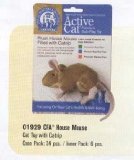
10.) The CFA Catnip Toys House Mouse is a plush rodent scented with catnip. Every cat needs a catnip mouse and this one is just the right size. This cute toy features charming details like little pink ears and paws.
There are so many different catnip cat toys on the market today. Savvy cat owners often buy several and cycle through them to keep their feline companions amused and entertained. This stimulation is especially important for indoor cats whose owners may be at work all day.
Even if the toys don’t have a refillable pouch or compartment, the catnip scent can be refreshed by storing the toy in a small container filled with catnip for a few days.

 Given the number of commercial products on the market, it’s no wonder that deciding on the proper food for the family’s canine member can be a confusing issue. From puppy to full grown, the offerings come in a variety of packs, sacks and cans, all of which are designed to catch your eye, but do they meet your dog’s nutritional needs?
Given the number of commercial products on the market, it’s no wonder that deciding on the proper food for the family’s canine member can be a confusing issue. From puppy to full grown, the offerings come in a variety of packs, sacks and cans, all of which are designed to catch your eye, but do they meet your dog’s nutritional needs?